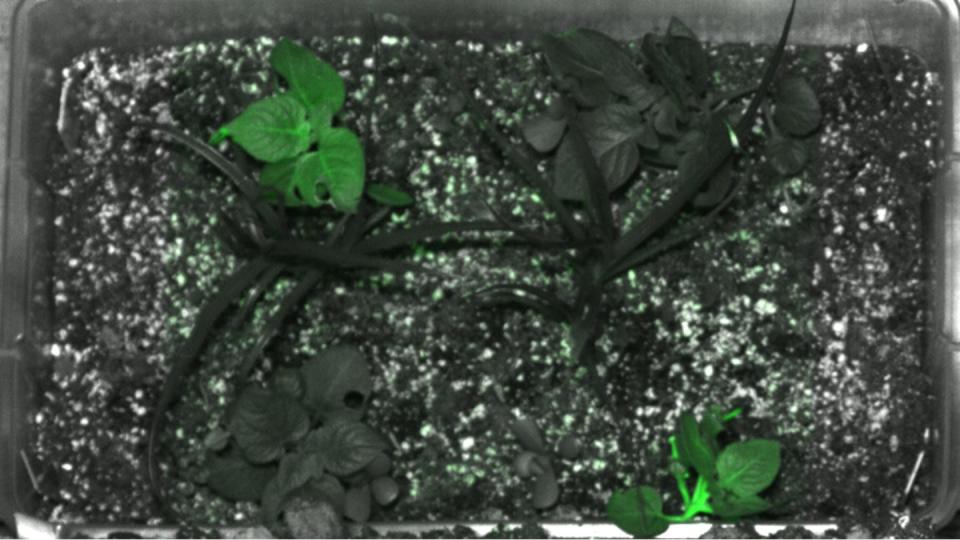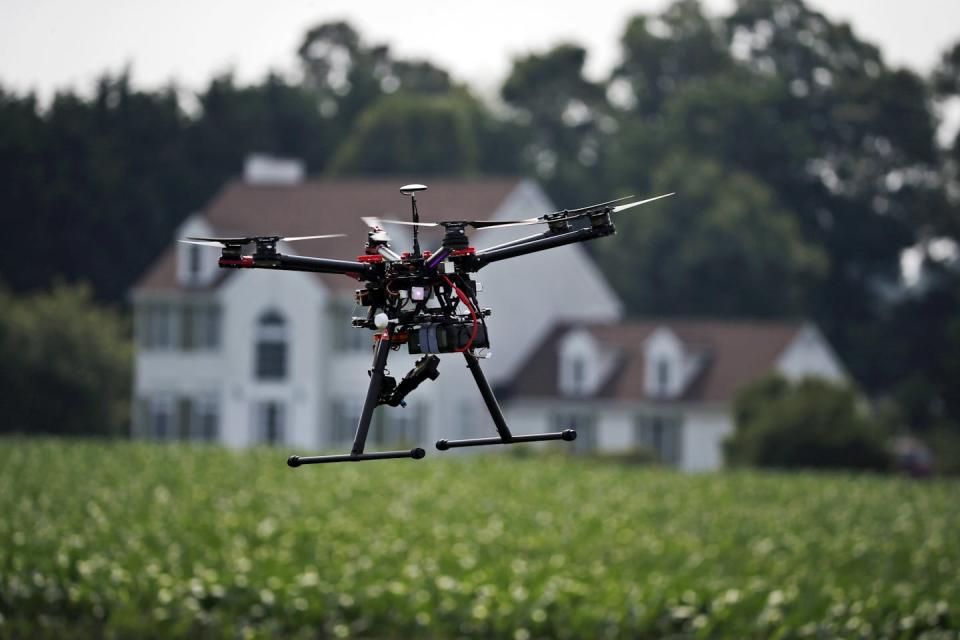While expanding nuclear power production would provide carbon-free energy and help countries around the world achieve their climate goals, nuclear power could also come with some inherent risks. Radioactive pollution damages the environment and is virtually impossible to detect without specialized equipment. But what if plants growing near the facility could detect radiation pollution?
The mechanical radiation detectors currently in use, called dosimeters, are not entirely reliable; during previous nuclear accidents such as Chernobyl they have failed or been buried under the rubble.
Our team of plant scientists at the University of Tennessee wanted to come up with alternatives to these mechanical radiation sensors to address their historical shortcomings, so we decided to build a plant-based gamma-ray sensor. The sensor, a so-called phytosensor, is a potato plant that glows fluorescent green when exposed to radiation.
Historical sensor problems
Current nuclear energy production is considered safe by the World Nuclear Association. But safety mistakes still happen, whether it’s human error or natural disasters like earthquakes that take the mechanical sensors offline – and that’s where our factory sensors can come into play.

Mechanical radiation detection equipment requires power and regular maintenance, making them less reliable during emergency situations. A plant-based sensor would need neither.
The kind of disasters that take mechanical sensors offline may damage the potato sensors, but most likely won’t kill an entire planted field of potatoes. As long as some plant cells are still alive, the plant could function as a radiation sensor.
Although potato plants are tough, some disasters, such as a wildfire, would damage plant sensors more than mechanical sensors. Although our sensors could complement mechanical sensors, they would not completely replace their use.


Plants as sensors
Unlike mammals, plants can tolerate a lot of radiation before dying. Potato plants, for example, can survive ten times the amount of radiation that would kill a human.
We chose the potato as our sensor organism because potato plants can tolerate high levels of radiation, are easy to grow using tubers, and can survive in different environments around the world.
Exposure to radiation damages the DNA in an organism’s cells. When this happens in plants, they enter a ‘red alert’ scenario and activate many DNA repair genes to solve the problem.
My colleagues and I co-opted the DNA damage response pathway in potato plants so that the potato leaves produced a green fluorescent protein when exposed to radiation. This fluorescent protein ensures that the sensor plants emit a unique green fluorescent glow when exposed to gamma radiation.
Although the human eye cannot see the green signature, drones used for agricultural and environmental monitoring can. The more green fluorescence the plant produces, the higher the radiation intensity. So the sensors can tell you “yes, there is radiation”, and also approximately how much radiation there is.
In our tests, the plants reported radiation eight hours after exposure, but that was also the earliest our team could monitor them.


Based on our tests, the current radiation phytosensor can report a minimum total dose of 10 gray radiation – a very lethal dose for a human. The sensors reported the radiation eight hours after exposure and continued to do so for ten days or more, depending on the dose.
Mechanical sensors can detect much lower levels of radiation in real time, rather than as a cumulative dose as the phytosensors detect. This makes mechanical sensors ideal for the daily monitoring of hazardous radiation within a power plant, while phytosensors are better suited to monitoring the larger areas of land surrounding a power plant.
The current sensor could monitor radiation levels for the general public in an emergency scenario where radioactive material could be located anywhere in a large disaster area. Chernobyl contaminated an area the size of Nebraska, while Fukushima contaminated an area the size of New Jersey. Most of this area was polluted at low levels, with some hotspots.
Compared to mechanical sensors, phytosensors are slower and less sensitive, so they would not save anyone working in the power plant, even if grown indoors. The current sensor could tell first responders where the hottest areas are during a large-scale disaster. After a disaster, it could inform regulators where it is safe for workers, and ultimately the public, to return to.
We tested the sensor using a laser and camera in the laboratory, low-power, low-resolution devices. Real drones with specialized detection systems would likely be able to detect lower radiation thresholds.
The potato-based radiation phytosensor not only functions similarly to mechanical radiation sensors, but is also a living and growing organism that obtains its energy from sunlight. This means that the phytosensor is self-healing, self-propagating and self-sustaining, unlike mechanical sensors. Because potatoes grow from tubers, they do not need to be replanted every year.
A clear disadvantage of the current sensor is that potato plants die in winter, meaning you lose the sensor during that season. Our sensor gene could potentially be placed in an evergreen species such as a pine tree, but this sensor would need to be retested to understand its detection minima and performance over time.
Potential applications
When used in combination with more sensitive mechanical sensors, the current radiation phytosensor could act as a fail-safe if a disaster similar to Fukushima Daiichi were to occur.
While there are many opportunities to integrate phytosensors into our current monitoring systems, our team still needs to overcome hurdles before the plants can be deployed in the field.
First, nuclear regulators should determine whether this technology is safe and useful given their expectations for radiation monitoring equipment. Next, the plant sensor would undergo a rigorous evaluation by the USDA to determine whether the phytosensors would have a negative effect on ecosystems if released.
Overcoming these hurdles requires more research, which could take months given the growing time of plants. Despite the work ahead, radiation phytosensors could help protect people and the environment in the future as countries continue to produce nuclear energy.
This article is republished from The Conversation, an independent nonprofit organization providing facts and trusted analysis to help you understand our complex world. It was written by: Robert Sears, University of Tennessee and Neal Stewart, University of Tennessee
Read more:
Neal Stewart receives funding from federal organizations. This work was funded by the Defense Advanced Research Projects Agency. Neal Stewart is an inventor in the field of plant biotechnology, although none of the technologies described in the Conversation article are patented.
Robert Sears does not work for, consult with, own stock in, or receive funding from any company or organization that would benefit from this article, and has disclosed no relevant affiliations beyond his academic appointment.